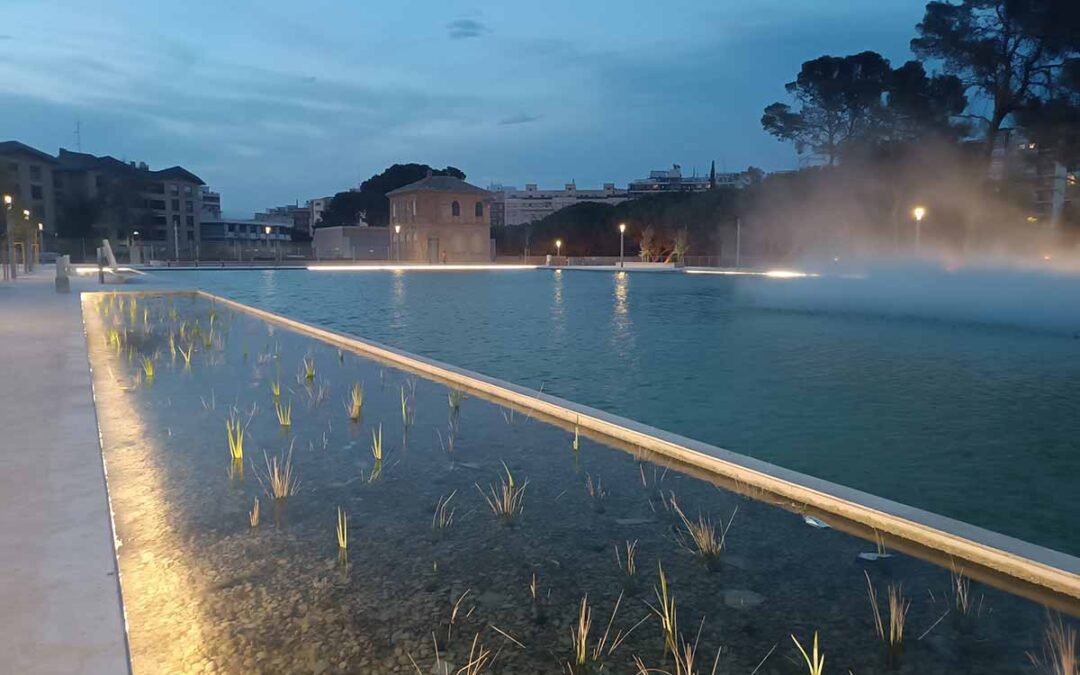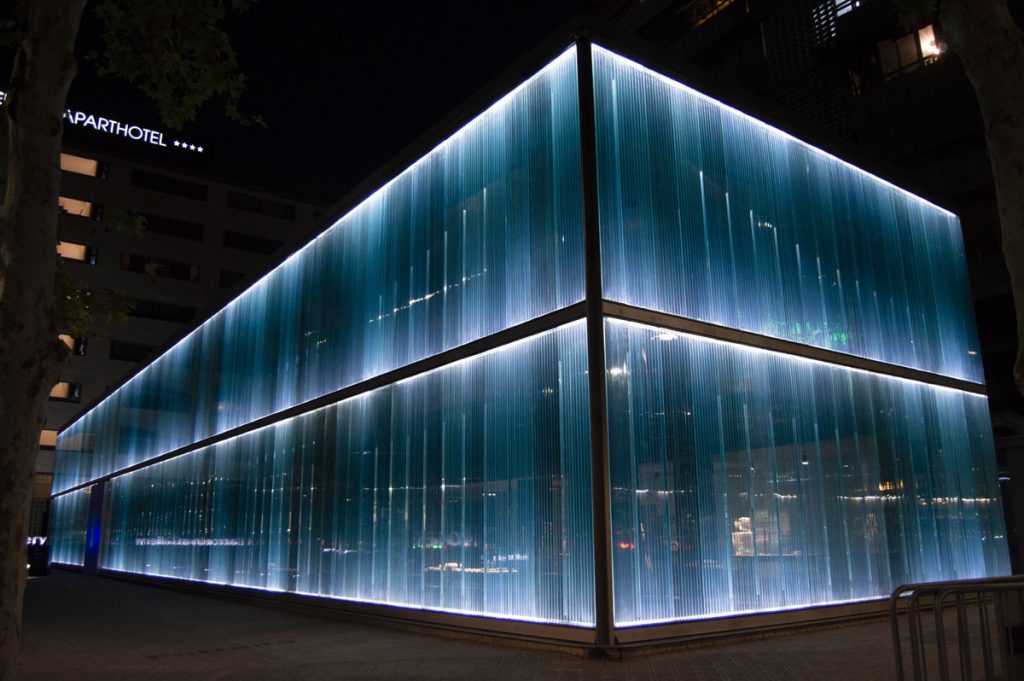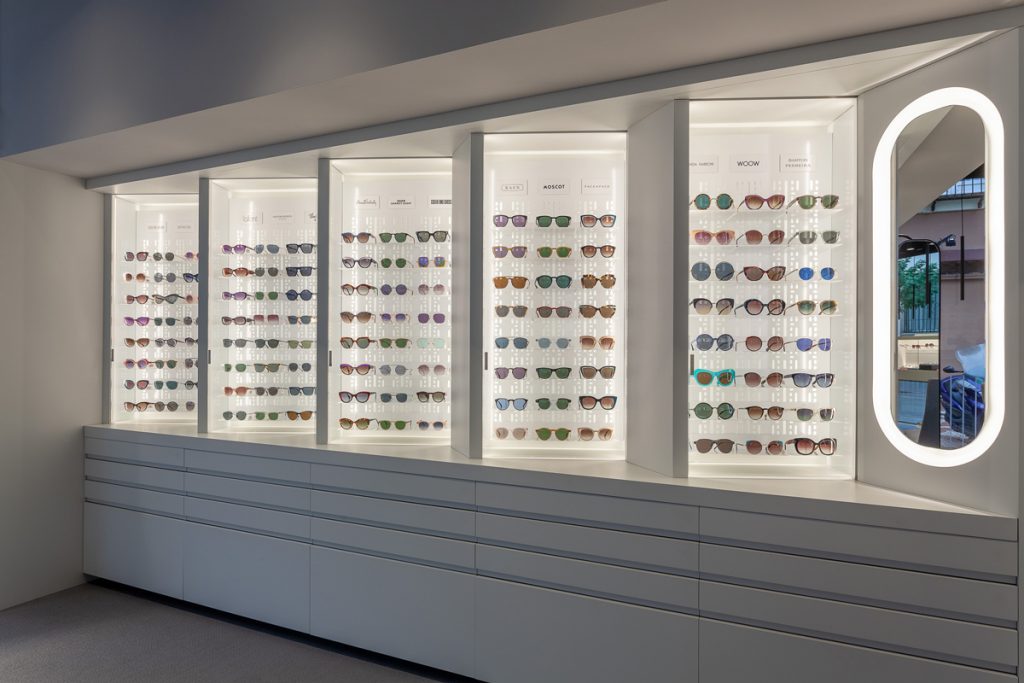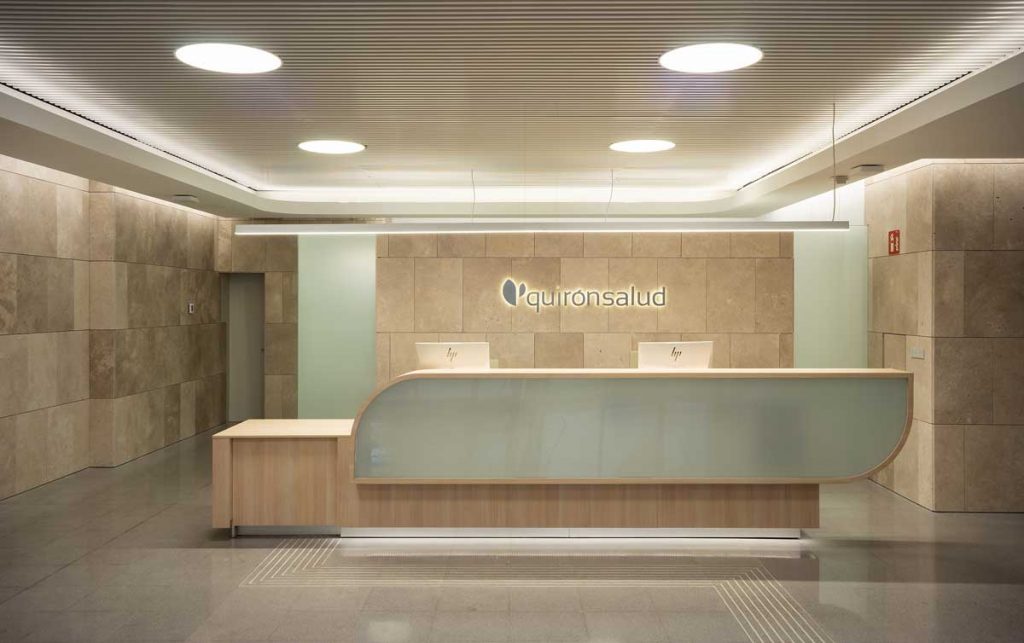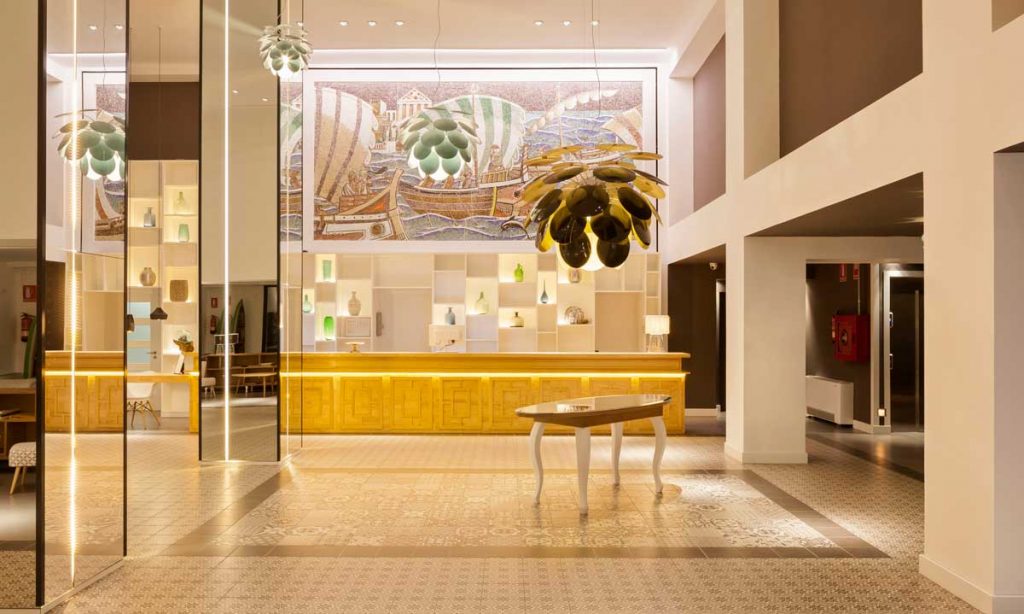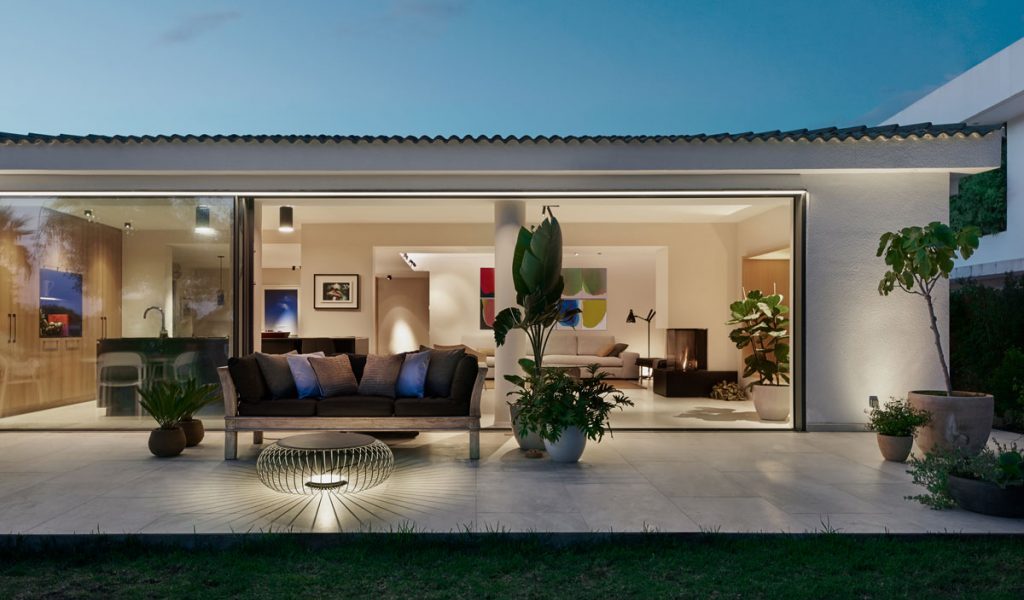
In residential projects, the outdoor lighting is often planned after the indoor lighting has been designed, despite the two being closely related. The lighting design of a home and its surroundings must always go hand in hand as the light from gardens, paths, terraces and other outdoor spaces amplifies and enriches the indoor areas, facilitating functional and aesthetic continuity between the indoors and outdoors. In this article we will analyse the main outdoor lighting areas in a residential project, the design criteria to be taken into account, and the role played by linear lighting.
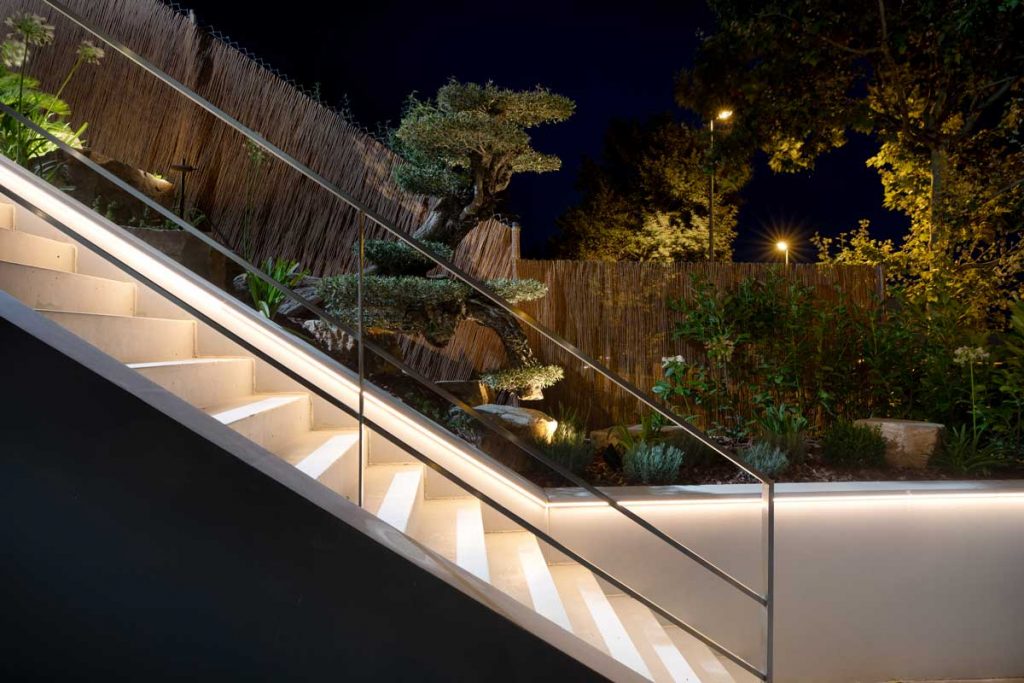
Welcome lighting on walkways and at entrances
The lighting on walkways will depend on the type of house and the surrounding terrain but, at the very least, it must ensure people’s safety, guide them and welcome residents and visitors. The routes close to the house or other vertical structures or the landscape can benefit from reflected light from linear fittings recessed in the ground, without requiring direct light. On the other hand, when the paths move away from the building, specific lighting is needed. A discreet and effective solution is to fit linear LEDs in curbs, plinths or other borders of the landscape design.
When flat paths meet stairs, linear lighting offers many elegant and invisible solutions. For example, each tread or riser in a flight of steps can be illuminated, and specific design details built in, depending on each flight’s structure and material. But if integrating light into each step is difficult, we can always fit linear LEDs into the handrails or in continuous plinths.
Once we get to the entrance, it is a good idea to slightly increase the light level near the door. We can do it decoratively or more architecturally, depending on the style of the home. In both cases, linear lighting is always a good way of creating a specific lighting effect. If people arrive by car and not on foot, the linear lighting’s very form directs the gaze effectively and provides interesting opportunities for lighting and marking out parking spaces.

Outdoor recreation and relaxation
Terraces, courtyards, bowers and swimming pools are the outdoor areas of the home where we enjoy social and recreational activities in the open air. Just the sound of these words evokes feelings of relaxation, fun and getting away from our routines and immediately makes us imagine a soft and subtle nocturnal lighting. To achieve this type of atmosphere, indirect light solutions with integrated and hidden LED lines in architectural details are essential and provide a general light base that can be complemented by small accent lights such as candles, beacons or other decorative elements.
Outdoor accent lighting often highlights singular aspects of the architecture, vegetation or landscape, swimming pools or water features. For walls or climbing plants, bathing the wall with light is highly effective, and Lluria’s range of fittings can provide uniform or gradient lighting, according to the needs of the material or the environment. On the other hand, the Wolf range is specifically designed for swimming pools and water features; it combines the performance and quality of Lluria’s IP68-standard products and is submersible.
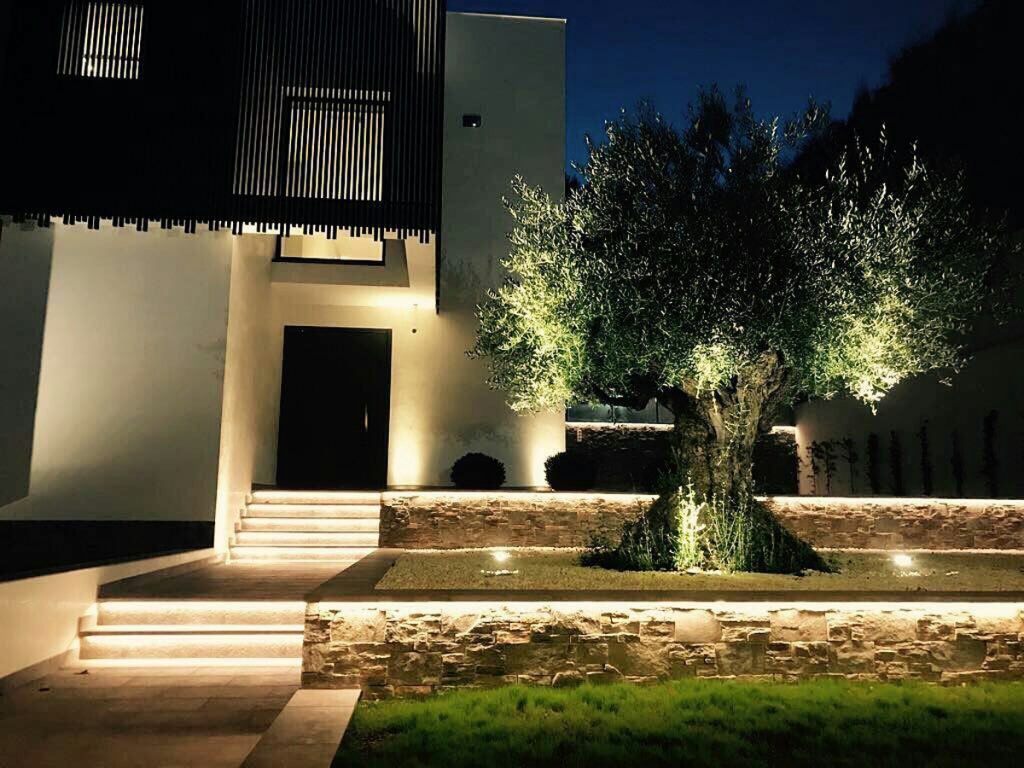
Less is more
Usually, when lighting gardens and outdoor areas, less is more, and the light must be handled subtly and with restraint. At night, our eyes work differently from the day and we need less light to see where we are and to get our bearings. Our vision is more peripheral type, less focused on colour, and more sensitive to shades and chiaroscuro patterns. This means we can work with less wattage and, if necessary, with slightly lower CRIs than those used indoors. It also forces us to carefully control glare and direct vision of light sources and bright spots, since our night vision is adjusted to lower light levels and direct vision of very bright lights is more annoying than it is indoors.
The way to avoid annoying glare is to find solutions in which the light is hidden, shines indirectly or is reflected; we must also take special care to integrate the fittings into the landscaping. Because they are small, Linear LEDs lend themselves to all these applications and Lluria has specially designed profiles that blend in perfectly at every level of detail.

Limits and points of view
Paradoxically, setting limits on outdoor lighting does not limit our options, quite the opposite. It widens the perception of space and enriches the depth of our visual field. Linear lighting is the perfect ally in these cases, since it can illuminate the boundaries of a property, the perimeter of planters or the edges of a path, perfectly outlining these “limits” and subtly highlighting them, by lighting the horizontal or vertical plane. This is especially interesting when we observe a garden from inside a home, since the play of contrasts allows us to better appreciate the depth of the space, and makes this vista a fundamental part of our inner space.
In conclusion, considering different points of view, both from inside the house and from the entrance or other significant spots in the garden, is an extraordinarily powerful resource when designing the outdoor lighting of a home. It will help us decide which elements to highlight through the light and which solutions to apply for perfect harmony between indoors and outdoors.

